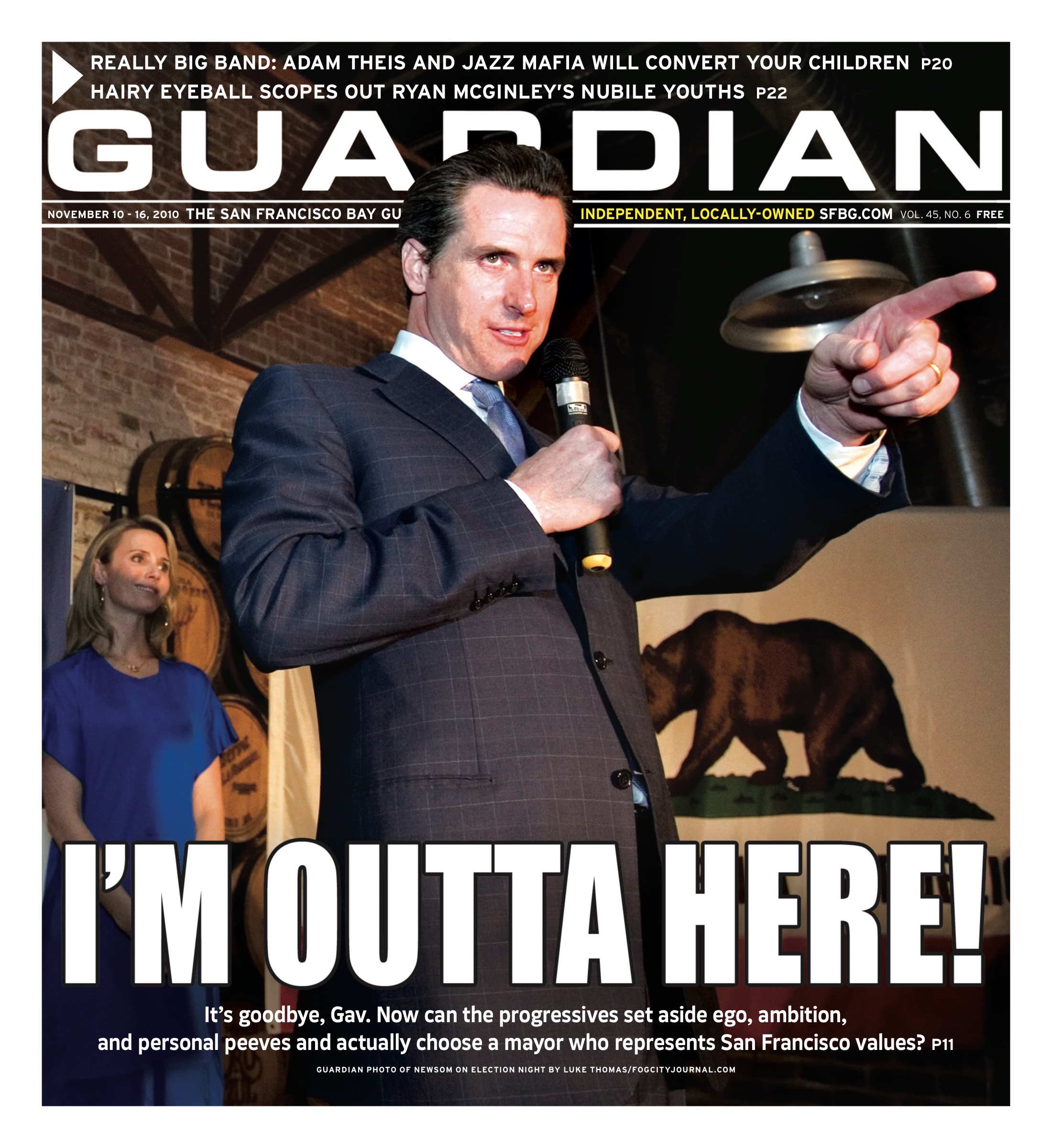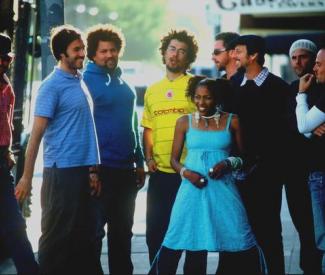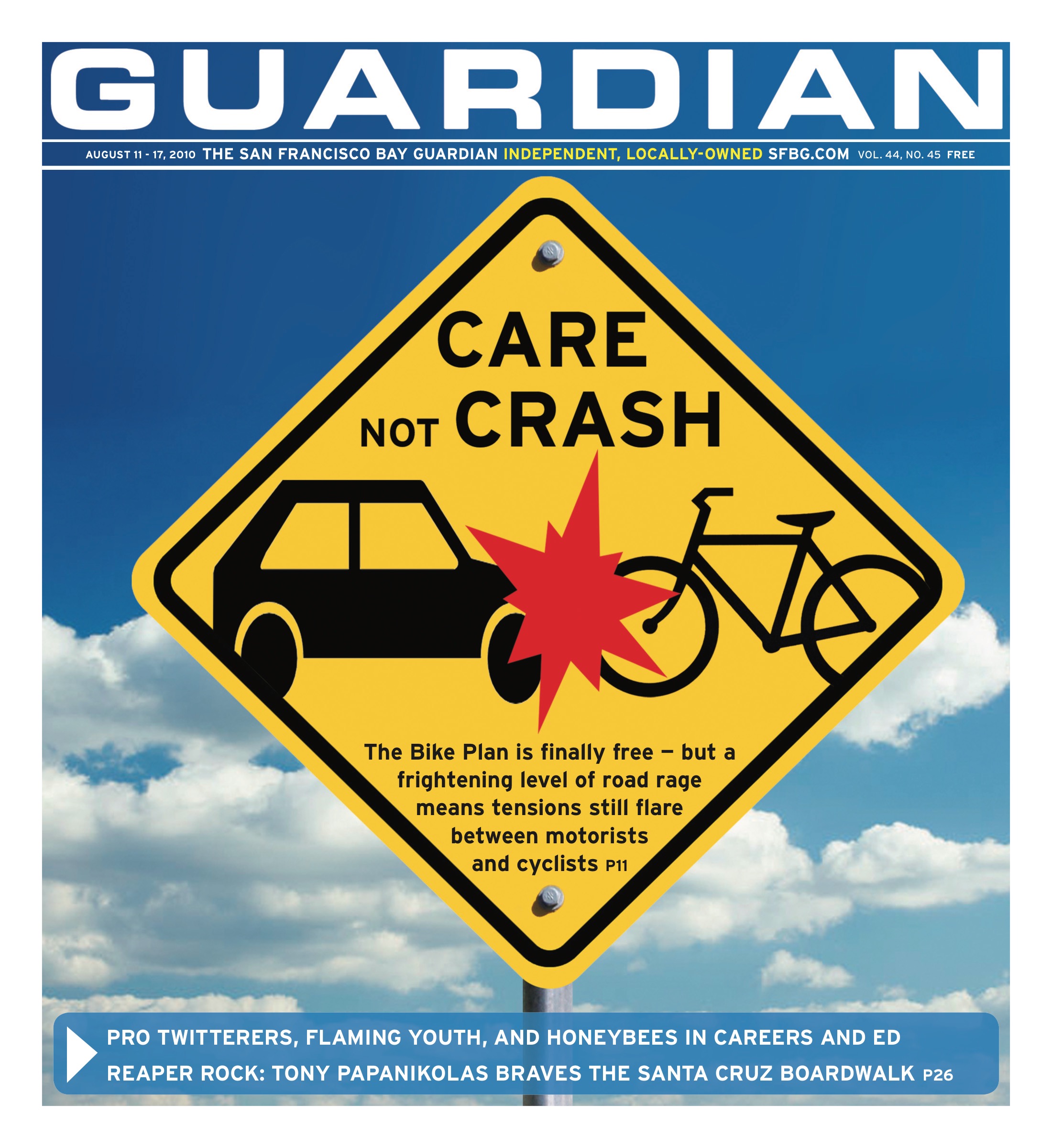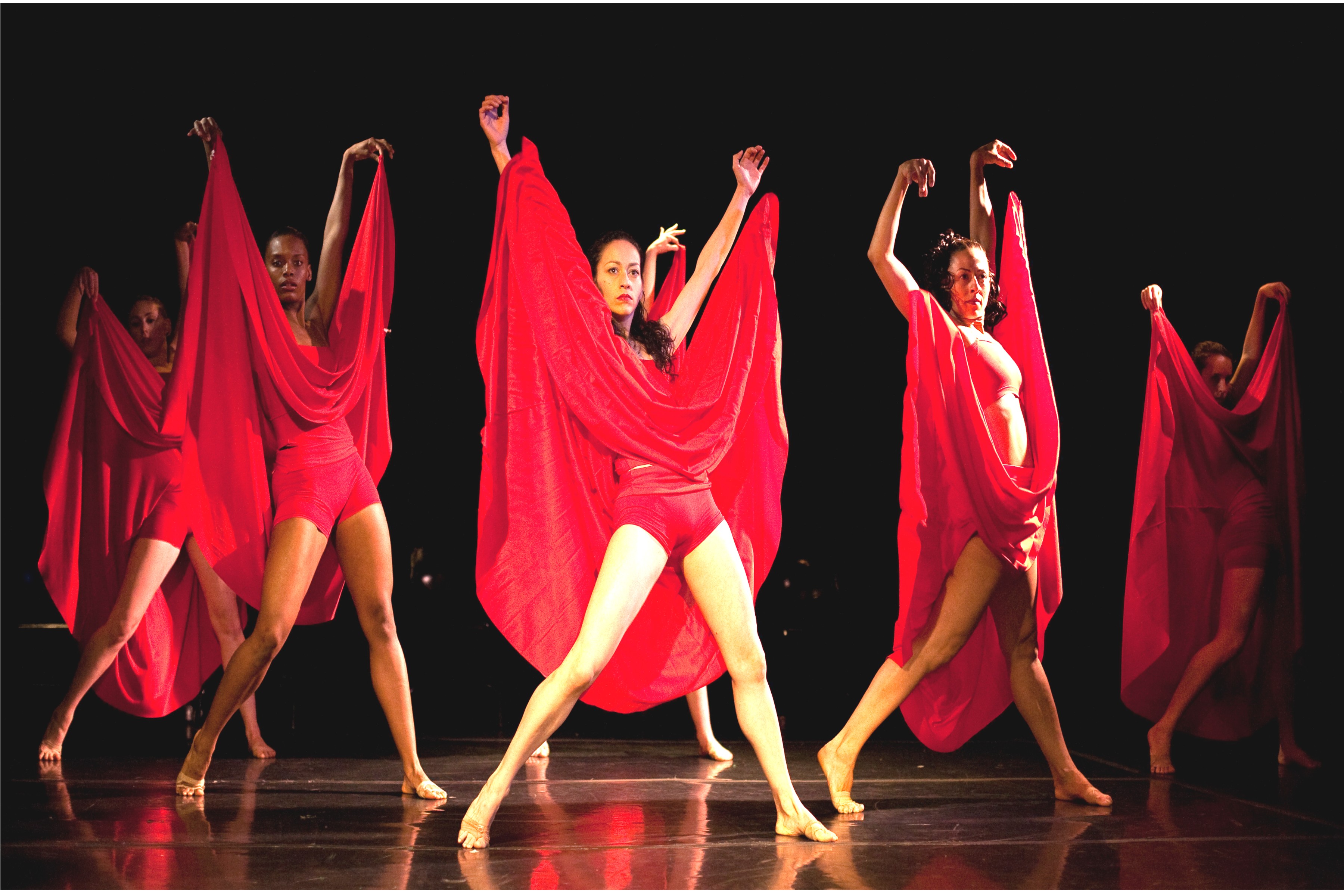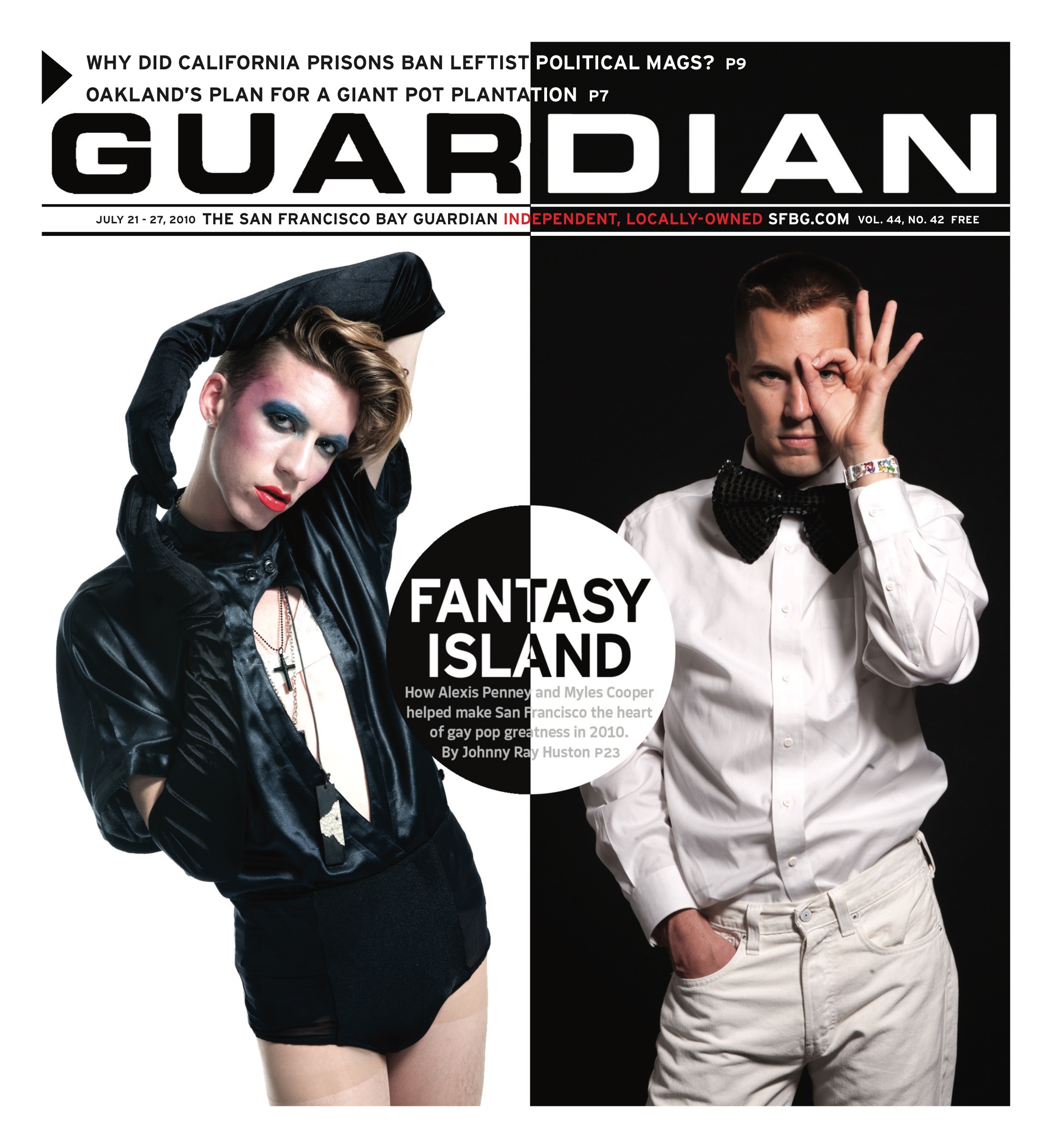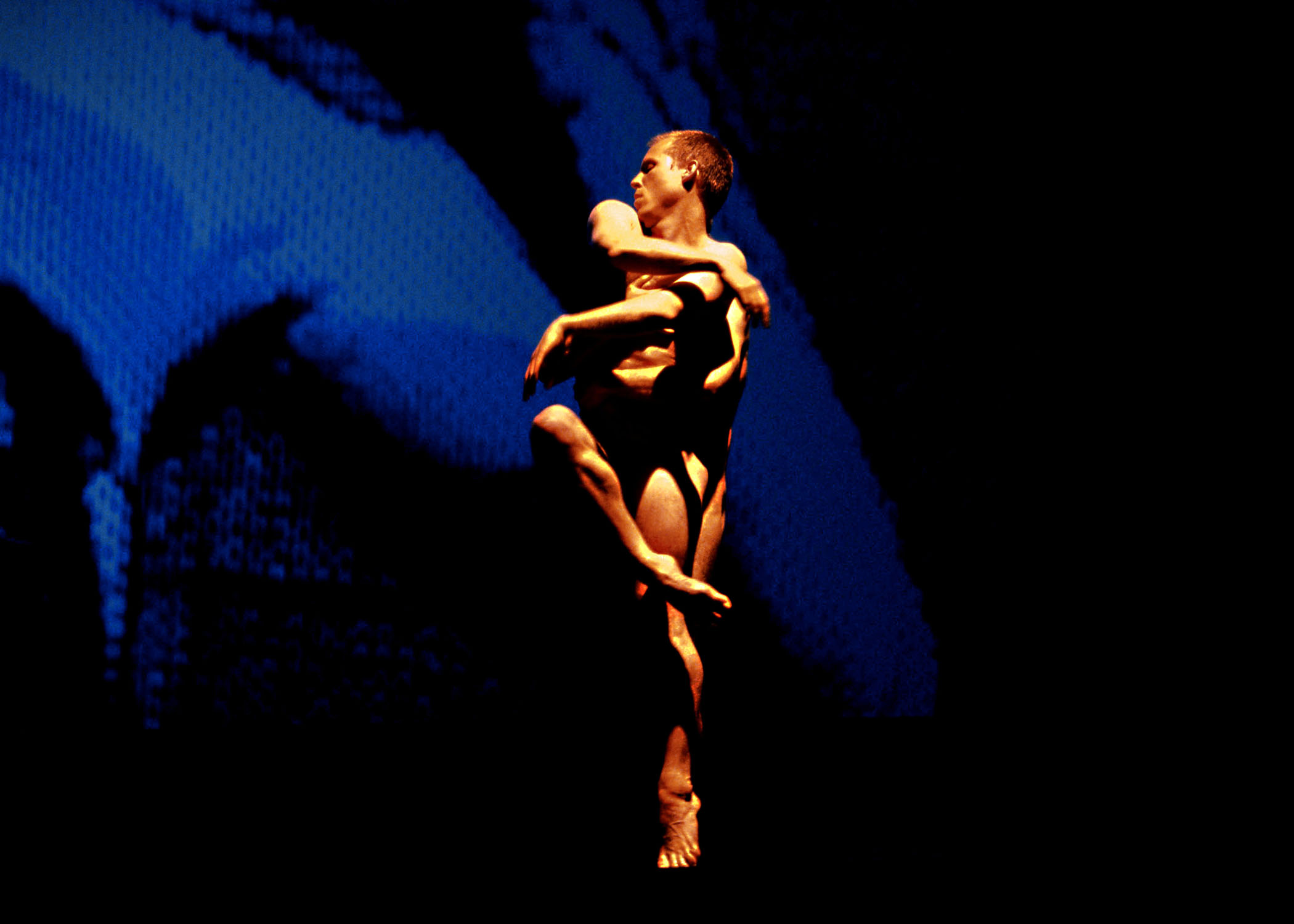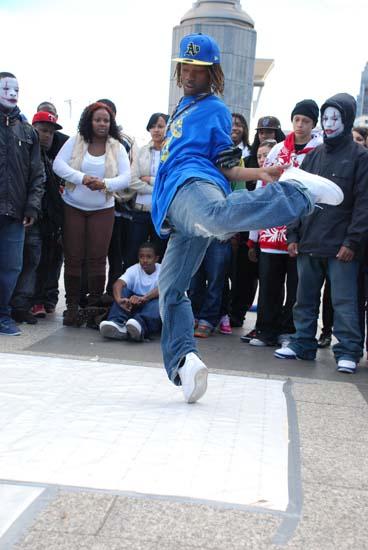arts@sfbg.com
DANCE With stunning classically trained dancers and a repertory that features emerging and legendary choreographers, it’s no surprise that after bringing four West Coast premieres to Cal Performances at Zellerbach Hall (Oct. 29-30), Hubbard Street Dance Chicago left audience members in awe. Under the artistic direction of Glenn Edgerton, former dancer and artistic director of Nederlands Dans Theater, HSDC continues to uphold a long tradition of exceptional dancing and exciting contemporary choreography.
In the show’s opening piece, Nacho Duato’s Arcangelo (2000), warm hues of dark yellow and gold (lighting by Brad Fields) illuminate a lustrous gold backdrop as the dancers (Laura Halm, Alejandro Piris-Nino, Penny Saunders, Jesse Bechard, Ana Lopez, Kevin Shannon, Jacqueline Burnett, and Pablo Piantino) bathed in light move through a series of intimate duets and solos with grace and power. Duato’s choreography subtly juxtaposes severe movements — hunched backs, flexed feet, and jagged angular undulations — with an overall classical and streamlined aesthetic. In doing so, Duato emphasizes the heavenly lightness and deep emotional currents inherent in the music of Arcangelo Corelli and Alessandro Scarlatti. The piece ends in ethereal light and grounded darkness, as three couples lie motionless on the floor while the fourth couple climbs a long dark silvery cloth and — hanging, bodies outstretched — is pulled upward toward an imagined heaven.
The middle portion of the evening featured two works by Hubbard Street dancer and resident choreographer Alejandro Cerrudo. The curtain rose on Cerrudo’s Blanco to reveal four spotlights (set and lighting design by Nicholas Phillips), each illuminating a woman beneath a billowing cloud of smoke. Even in stillness, the four exquisite dancers, Halm, Jessica Tong, Meredith Dincolo, and Robyn Mineko Williams, exhibited strength and conviction. Dressed in attractive blue-gray leotards, sometimes moving together and at other times breaking off into solos, the dancers remain for the most part contained in their own personal spotlight. While the four women move like sculptures of contained perfection, an organic fluidity and drive to break free lies beneath the calm. Precise arm gestures and firm shapes melt into subtle head rolls and seamless transitions to the floor. The dark, driving piano melodies by Mendelssohn and Charles-Valentin Alkan emphasize a raw, dramatic emotion at the core of Blanco.
In Deep Down Dos, Cerrudo, “inspired by imagery and sounds of tectonic plates, crystalline caverns, and blazing infernos,” launches his dancers into shadowy darkness and continual motion. The dancers (Lopez, Burnett, Saunders, Kellie Epperheimer, Benjamin Wardell, Pablo Piantino, Jason Hortin, Jesse Bechard, Kevin Shannon) run and leap across the floor in a fast-paced frenzy of activity. Although this extreme physicality generates a wonderful excitement, Cerrudo’s choreography in this work at times feels disconnected. When the four men dance together, their lighthearted jazz leaps seem to go against the piece’s dark atmosphere and the compellingly dissonant music score by Mason Bates. Is this disconnect between movement and atmosphere intentional or accidental? Regardless, Cerrudo’s work stands up well alongside legends Kylian and Duato.
The evening ended with Jiri Kylian’s 27’52”, staged by Christina Gallofre Vargas and Gerald Tibbs. Set to eerie and electrifying music by Dirk Haubrich, Kylian brings his six dancers into violent and vulnerable contact. Cutting though space like exploding glass, the dancers crash, clash, pull, push, resist, and manipulate their way through quick gestures and athletic partnering sequences. On Oct. 30, the way in which dancers Tong, Hortin, Epperheimer, Piris-Nino, Piantino, and Halm expressed a sense of human vulnerability amid such fierce and gutsy movement was perhaps the most awe-inspiring aspect of the entire night. After an emotionally intense duet between Tong and Hortin — in which the two beautifully intertwine, lean, and lift each other through a struggle of resisting and giving in — the pair ultimately end up lying alone on opposite sides of the stage as thick white sheets, used as scenery throughout the piece, come plummeting to the floor.

